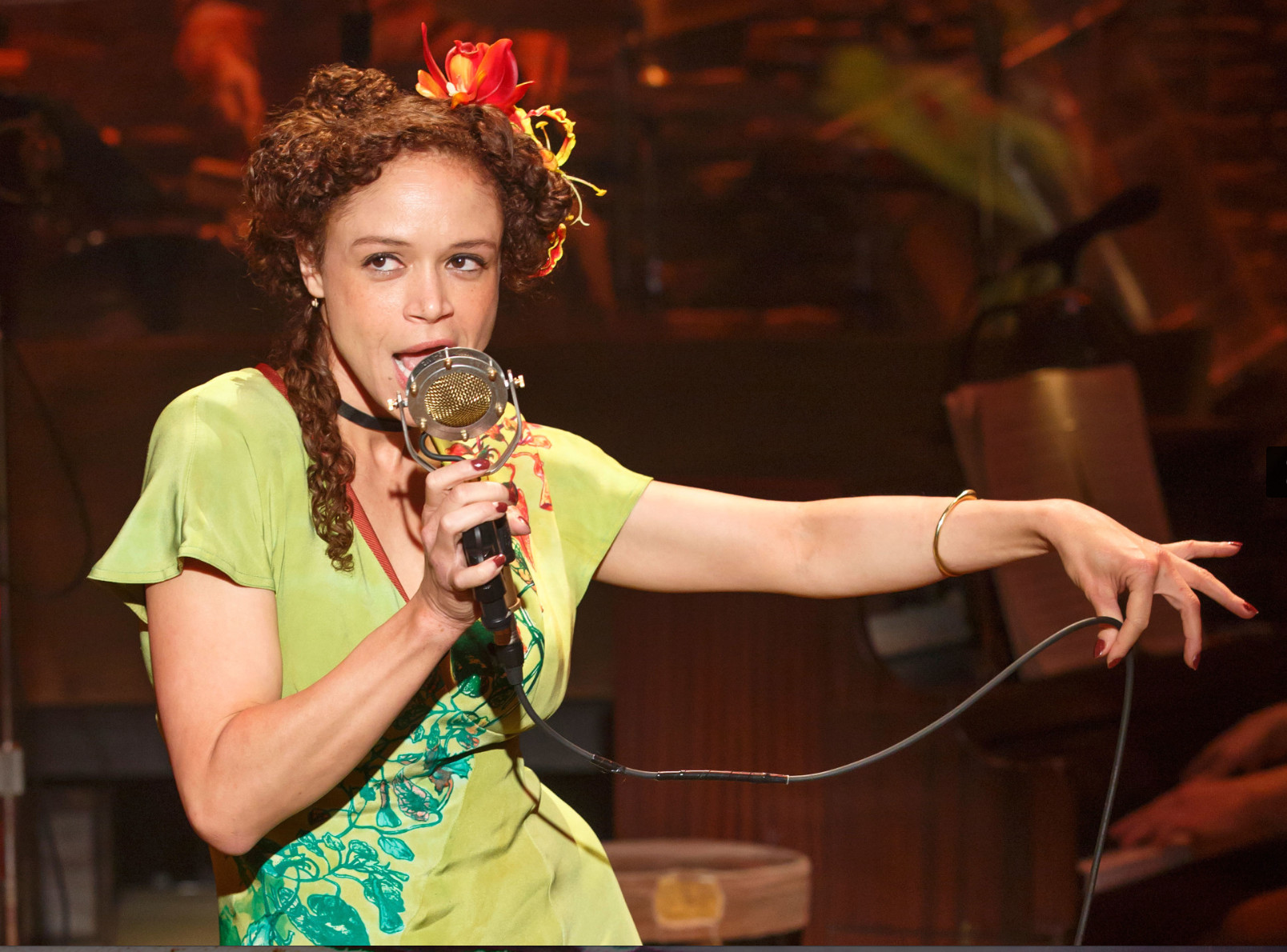‘Hadestown’
Review by Elyse Trevers
It’s a familiar story, one often told; yet the famous Orpheus and Eurydice myth feels fresh and current in the NYTW version Hadestown, by Anais Mitchell.
Orpheus (Damon Daunno) is a young musician who falls in love with Eurydice (Nabiyah Be.) She wants security, shelter and food, but he promises her love. All goes well as long as it is spring and summer but when it turns cold and food is scarce, Eurydice is lulled by Hades (a perfect Patrick Page) into making a deal. She winds up in the underworld.
In a separate myth closely woven into this musical, Hades falls in love with Persephone (Amber Gray). When he marries her and brings her to the underworld, all vegetation on earth dies. A compromise is made so Persephone can return to the earth for half the year, giving us spring and summer. When she returns to her husband, we have fall and winter.
In Mitchell’s version, Hades’ underworld is a factory with a wall built to “keep them out,” providing “freedom” for its inhabitants. In reality, anyone who arrives in Hades is doomed to stay and toil forever. (Undoubtedly the notion of building a wall may resonate with some people, given the present political climate.)
Through the beauty of his songs, Orpheus is able to get down to Hades where he sings, pleading to be reunited with his love. Despite himself, Hades is touched, but not wanting to appear weak, relents with one provision. Orpheus can take Eurydice but he must be in the lead and never turn around to look at her. Just before they reach the earth’s surface, he turns and she disappears forever.
Several in the audience, possibly lulled by the often spirited music, gasped in surprise at the ending.
The story and music go well together and that’s what makes Hadestown so unique. With The Three Fates and Hermes (Chris Sullivan) as the singing narrator/Greek chorus, the music, often jazzy and other times gospel, is often more upbeat than one would expect given the subject matter.
The NYTW Theater is sparse, with only one large gnarly tree hanging over the stage area and several rectangular metal gratings moved around to create pathways. The performance is in the round and the actors often interact with people in the first few rows.
Developed with and directed by Rachel Chavkin, the show’s already been extended and I wouldn’t be surprised if some producers see Broadway possibilities for this distinctive show. But be forewarned: even on Broadway, the ending will be the same.






